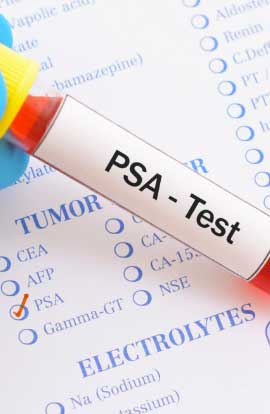
Sometimes, radiation therapy fails to eliminate prostate cancer completely. Recurrent prostate cancer after radiation therapy is a serious health risk for approximately 20% – 30% of radiation-treated patients7.
Finding alternative salvage options is essential so that these patients can continue to be treated for their prostate cancer with minimal health risk.
Having radiation therapy a second time (after an initial failed radiation treatment) is usually not an option because there is an increased risk of serious side effects3. A second radiation treatment would do significant damage to the tissues around the prostate, such as the bladder and rectum¹. Although in some cases, brachytherapy (BT) may be an option after external radiation3.
Salvage treatment options after a failed radiation therapy may include cryotherapy, radical prostatectomy, and HIFU², ³. However, when these treatments are done after radiation, they carry a higher risk for side effects, such as incontinence³ and genitourinary toxicity². Choosing the best salvage treatment option will depend on whether the cancer has remained in the prostate (localized cancer), or if it has spread well-beyond the prostate (advanced cancer) to lymph nodes or bone.
Cryotherapy is the use of very cold temperatures to kill prostate cancer cells. While the patient is under anesthesia (spinal, epidural or general), the physician uses transrectal ultrasound (TRUS) to guide several hollow probes (needles) through the skin between the anus and scrotum and into the prostate. Cold gasses are then passed through the needles to freeze and kills the prostate tissue. To protect the urethral from freezing, warm saltwater is passed through the catheter in the urethra.
Common side effects from cryotherapy include blood in urine, soreness in the areas where the needles were places, and swelling of the penis or scrotum. Freezing might also affect bladder and bowel function, but most men recover over time6.
The TULSA Procedure is a less invasive option. It is a customizable, predictable, incision-free and radiation-free ablation of a surgeon defined region of the prostate. It is performed in combination with real-time MR Imaging, transurethral thermal ultrasound and a closed-loop temperature feedback control.
Radical prostatectomy is a surgical procedure (performed robotically or not) that removes the entire prostate gland. If the cancer has spread to surrounding lymph nodes, they too are removed.
Common side effects faced by patients after undergoing prostatectomy include erectile dysfunction and urinary incontinence4.
Hormone therapy is the main treatment option for prostate cancer that has spread to surrounding organs¹. Most recurrent prostate cancers will respond to hormone therapy, but it isn’t likely to be curative³.
The types of hormone therapy that can be used are1:

Early prostate screening is highly recommended so that prostate cancer can be found early and treated using less invasive options. This will increase the chances of a successfully procedure, while minimizing the risk of negative side effects that can affect quality of life.
Men should receive regular health checkups with their doctor if they are experiencing symptoms. The prostate specific antigen (PSA) test is a key indicator in detecting early prostate cancer5.
1. Canadian Cancer Society. (2021) Treatment for recurrent prostate cancer. Retrieved: https://www.cancer.ca/en/cancer-information/cancer-type/prostate/treatment/recurrent-disease/?region=on#:~:text=If%20the%20cancer%20was%20treated%20with%20external%20beam%20radiation%20therapy,as%20the%20bladder%20and%20rectum.
2. Ingrosso, Gianluca, et al. “Nonsurgical salvage local therapies for radiorecurrent prostate cancer: a systematic review and meta-analysis.” European urology oncology3.2 (2020): Retrieved from: https://www.sciencedirect.com/science/article/pii/S2588931118302190
3. American Cancer Society. (2020, June 11). Treating Prostate Cancer. Retrieved: https://www.cancer.org/cancer/prostate-cancer/treating/recurrence.html
4. National Cancer Institute. (2019, June 12). Prostate Cancer Treatment. National Cancer Institute. Retrieved: https://www.cancer.gov/types/prostate/patient/prostate-treatment-pdq
5. Canadian Cancer Society. (2021) Finding Prostate Cancer Early. Retrieved: https://www.cancer.ca/en/cancer-information/cancer-type/prostate/finding-cancer-early/?region=on
6. American Cancer Society. (2019, August 1). Prostate Cancer. Atlanta, GA: American Cancer Society: Retrieved: https://www.cancer.org/cancer/prostate-cancer/treating/cryosurgery.html
7. Rukstalis, D. B. (2002). Treatment options after failure of radiation therapy—a review. Reviews in urology, 4(Suppl 2), S12. Retrieved: https://www.ncbi.nlm.nih.gov/pmc/articles/PMC1477547/